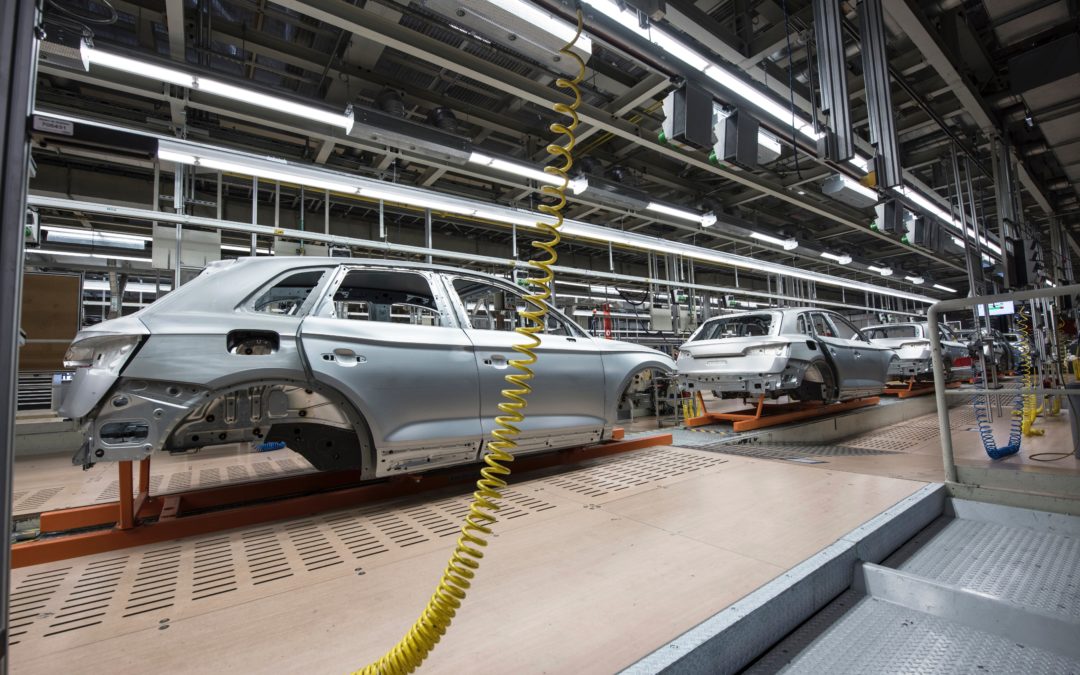It’s always best to address any cleanroom problems as soon as possible — better yet, to prevent them with regular cleanroom maintenance. If your automotive cleanroom isn’t working how it should, you may notice some of these signs:
#1 Your Cleanroom is Extra Loud
If you hear loud noises, rattling, whining, clanking or just a general noise that can’t be attributed to your normal operations, it could indicate that something isn’t working properly. Your equipment and systems need regular service to make sure they are functioning efficiently and working toward a cleaner environment. If you aren’t servicing your equipment regularly and making updates when needed, your systems may actually be working against you. If you’re hearing loud noises, it may be time to check your cleanroom HVAC system requirements and upgrade your cleanroom systems.
#2 You See Dust Particles In the Air
If you’re seeing dust particles flying around your automotive cleanroom, this is a clear sign that something’s been missed in your filtration protocols. Depending on your automotive cleanroom’s specific classification requirements for particulate matter, the consequences of poor filtration could range from being disruptive to your operations to being detrimental for project efficiency or employee safety.
Particles in the air indicate that your filters may be old, full, or ineffective, your cleanroom’s airflow pattern isn’t controlling the air flow direction to make use of filters, or your cleanroom HVAC system may not be powerful enough to replace air effectively and uniformly. Excessive stray particles could also result from something in the cleanroom that is shedding particles — whether that’s equipment, cleanroom furniture, or even you. This is a good time to give your cleanroom filtration and garments a close inspection to find the culprit.
#3 You’re Concerned About Product Quality or Test Results
If your cleanroom isn’t working the way it should, it will likely affect your product quality, productivity and efficiency, and testing results within the cleanroom. If your cleanroom problems make it difficult for you to keep up with your classification standards, you can’t guarantee quality in your operations. With unreliable testing, manufacturing, or packaging, your products could fail and discredit your business. In the automotive industry, product failure could have disastrous consequences.
To avoid this, you need to catch up with cleanroom maintenance tasks and make sure your cleanroom is operating at peak efficiency. You can test your cleanroom’s level of cleanliness using a particle counter.
How to Test Your Cleanroom Using a Particle Counter:
- Choose sample locations, based on your cleanroom’s size and layout
- Determine size and number of particles to test for
- Measure particle count at each sample location
- Average the measurements between samples
- Determine if the measurement reaches your allowed particle levels
#4 You Can’t Remember When You Changed the Cleanroom Filters
If you can’t remember the last time you completed regular cleanroom maintenance tasks like changing the pre-filters in your return air grilles, servicing the HVAC system, or conducting a thorough deep clean of your facility, there’s a good chance your automotive cleanroom isn’t working the way it should.
Protocols for cleanroom cleaning and maintenance are vital to an effective cleanroom — regardless of your classification. Dangers of skipping maintenance tasks. Here are a few common cleanroom maintenance tasks you should be performing regularly:
- Cleanroom cleaning: daily, weekly, and monthly cleaning tasks
- Replace pre-filters: 6 times per year
- Replace HEPA filters: every 3 years, but checked regularly
- Inspect and service HVAC system: twice a year
- Inspect and service cleanroom equipment: 6 times a year
The better you stick to a regular cleanroom maintenance schedule, the clearer understanding you’ll have of your cleanroom’s unique maintenance needs. You may find that your pre-filters don’t get as dirty certain times during the year, or find new tasks you can group for a more efficient schedule. Having control over cleanroom maintenance also gives you better control of your operations, reduces the chance of developing cleanroom problems, and ensures you’re always meeting your cleanroom classification standards.
Having trouble with your cleanroom? Call the experts at Angstrom Technology. Our technicians will come to you, diagnose the problem, and help you fix it as soon as possible.


